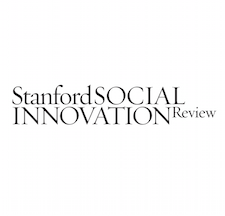
Nonprofits are spending more to get people involved in their cause simply because no one can understand what they’re saying. The language they use to convey who they are, what they stand for, and what they do confuses donors, volunteers, staff, and board. And when people are confused, they don’t fully engage.
Luckily, this is a fixable problem, and there are three things organizations can do to solve it.
1. Create a mission statement that articulates the root problem you address.
A mission statement is a nonprofit’s lead domino: It sets everything else in motion. There’s nothing wrong with an organization featuring its mission statement. The problem is featuring a mission statement that no one can understand. Unfortunately, incomprehensibility is too often the norm.
One of the best tools for making a mission statement easier to understand is the Flesch reading-ease test, which tells you how easy, or hard, something is to understand—roughly from 0-100, where higher numbers indicating greater readability.
2. Expand your linguistic repertoire.
Research on novelty from Stanford Professor Russell Poldrack and others infers that organizations can get more people to pay attention by using words that others aren’t using.
Yet after analyzing the words on 2,503 nonprofit websites (which offer excellent insight into broader language usage), I learned that nonprofits are availing themselves of a mere five percent of the more than one million words in the English language. That leaves 95 percent of all English words—words capable of piquing and keeping people’s interest—unused.
3. Use better verbs.
Verbs are action words. They are especially important in nonprofit messaging because they represent the change an organization is making in the world. Unfortunately, nonprofits often use terribly boring verbs to describe their amazing work!
Based on our research, top verbs nonprofits use are: support, make, and provide.
- Support works as both a noun (“Your support is invaluable”) and a verb (“Please support us”), which bumps up its frequency.
- Make shows up in two of the most common phrases nonprofits use: “Make a donation” and “make a difference.” So it’s not surprising that the term appears on approximately 75 percent of all nonprofit websites.
- That brings us to provide. Putting this verb front and center pretty much assures that no one will notice the change you are creating—68 percent of nonprofit websites use it.
With or without a mission statement overhaul, nonprofits would benefit from aiming for high reading-ease scores in all their communications, from availing themselves of the 95 percent of words other nonprofits aren’t using, and from finding more interesting verbs to explain what they do and why they do it.
This is an excerpt from the full article, which can be found here.





